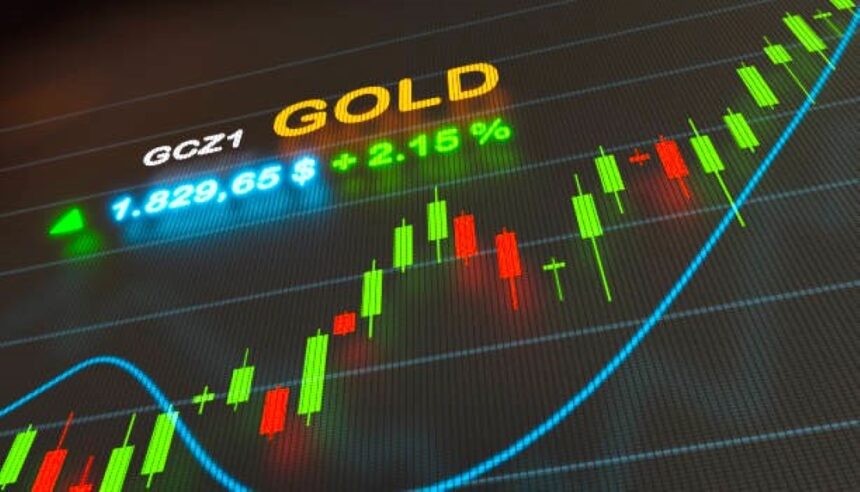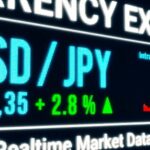Gold retreats from All Time High but Downside Remains Limited.
Gold prices have witnessed a significant retreat after touching a fresh all-time peak, largely driven by market reactions to the newly imposed reciprocal tariffs by former US president Donald Trump. The ongoing economic uncertainty, coupled with a bearish divergence in the Relative Strength Index (RSI), has prompted traders to take profits off the table, leading to a temporary pause in the bullish momentum of XAUUSD. However, the downside seems to be limited due to broader macroeconomic factors, including expectations of a Federal Reserve rate cut and falling U.S. bond yields, which have exerted downward pressure on the U.S. Dollar (USD).
Gold Price Retreats Amid Market Reactions to Tariffs
On Wednesday, Trump imposed a 10% baseline tariff on all imports and raised duties on major trading partners, sending shockwaves through global financial markets. Investors quickly sought refuge in safe-haven assets such as gold, driving its price to new highs. However, the sharp rally prompted bullish traders to take profits as the market adjusted to overbought conditions, leading to a temporary pullback in gold prices.
Despite the short-term correction, the broader market sentiment remains supportive of gold. The risk-off mood, fueled by trade war fears, continues to underpin the safe-haven appeal of the precious metal. China’s Commerce Ministry has already signaled retaliatory measures to counteract Trump’s tariffs, escalating tensions and adding further uncertainty to global trade.
Daily Market Update: Factors Influencing Gold Price Movements.
Several key market factors are at play in determining the trajectory of gold prices. These include economic data releases, Federal Reserve policy expectations, USD performance, and global risk sentiment. Below are the major influences shaping the current gold market:
1. Federal Reserve Rate Cut Bets and U.S. Bond Yields
The economic fallout from Trump’s aggressive trade policies has heightened concerns over a potential slowdown in the U.S. economy. As a result, market participants are now pricing in a 70% probability that the Federal Reserve will cut interest rates in June to counteract economic instability.
Lower interest rates reduce the opportunity cost of holding non-yielding assets like gold, thereby increasing its attractiveness to investors. Additionally, the steep decline in U.S. Treasury bond yields further undermines the USD, providing additional support to gold prices.
2. U.S. Dollar Weakness Amid Inflation Concerns
The USD has slumped to its lowest level since October 2024, primarily driven by expectations of a Fed rate cut and weakening economic indicators. A weaker dollar makes gold cheaper for investors holding other currencies, increasing demand and pushing prices higher.
Additionally, recent U.S. economic data has added to the dollar’s woes. The ADP employment report showed that private-sector employers added 155K jobs in March, surpassing the expected 105K but failing to provide a meaningful boost to the USD. This suggests that despite relatively strong labor market figures, investor sentiment remains weighed down by trade war fears and broader macroeconomic concerns.
3. Safe-Haven Demand Amid Global Economic Uncertainty
The resurgence of protectionist trade policies has reignited fears of a global economic slowdown. Investors, wary of the potential negative consequences of Trump’s tariffs, have increased allocations to safe-haven assets such as gold. The historical tendency of gold to perform well during periods of economic turmoil has reinforced its appeal among risk-averse investors.
As China and other major economies prepare countermeasures against U.S. tariffs, the risk of prolonged trade conflicts remains high. This could further destabilize global markets and sustain demand for gold as a hedge against uncertainty.
Technical Analysis: Is Gold’s Rally Over?
From a technical standpoint, gold’s recent price action suggests a temporary pause in the uptrend rather than a full-fledged reversal. The XAU/USD pair has managed to hold above the $3,100 mark, indicating that the bulls are still in control despite the recent correction.
Key Technical Indicators:
Relative Strength Index (RSI): The RSI has shown signs of bearish divergence, suggesting that gold was overbought before the recent pullback. This has prompted traders to take profits and reduce bullish positions.
Support Levels: Immediate support is seen near the $3,100 level, followed by stronger support around $3,050. A break below these levels could accelerate selling pressure.
Resistance Levels: On the upside, resistance is now forming near $3,150. A break above this level could open the door for a retest of the all-time high.
Overall, while short-term consolidation is likely, the broader trend remains bullish due to underlying economic fundamentals and ongoing risk aversion.
Upcoming Economic Events to Watch
Market participants will closely monitor key economic releases in the coming days to gauge the next move in gold prices. The most important upcoming data points include:
US Weekly Jobless Claims: This will provide insights into labor market strength and potential Fed policy moves.
ISM Services PMI: A weak reading could further fuel expectations of a rate cut, supporting gold prices.
U.S. Nonfarm Payrolls (NFP) Report: Scheduled for release on Friday, this highly anticipated report could significantly impact USD performance and gold price trends.
Conclusion: Limited Downside, Strong Upside Potential
Despite the recent pullback, gold remains well-positioned for further gains in the medium to long term. The combination of a weakening USD, declining bond yields, heightened trade tensions, and expectations of Fed rate cuts continues to support the bullish outlook for XAU/USD. While profit-taking and technical resistance may cause short-term fluctuations, the broader market dynamics suggest that gold’s rally is far from over.
Investors should remain cautious and monitor key economic data releases, as any surprises could influence market sentiment. However, as long as global uncertainty persists and the Fed leans toward monetary easing, gold is likely to maintain its safe-haven appeal, limiting downside risks and keeping the long-term outlook bullish.









